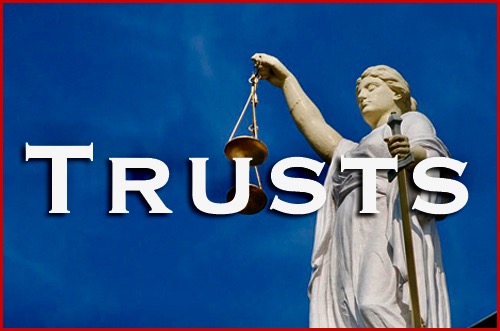Tyrell v Tyrell 2017 ONSC 4063 dealt with a jurisdictional case as to whether the Supreme Court of Ontario had jurisdiction to deal with the administration of a trust as opposed to the validity of a trust. The court found that the test is whether there was a “substantial connection” with Ontario in the administration of the trust and found that since there was, the Ontario court had jurisdiction as the address of the administrating trustee was in Ontario even though the trust assets were elsewhere.
Analysis
12 I conclude that this Court has jurisdiction over matters affecting the administration of the Will. The issue of jurisdiction is resolved on the basis of the distinction between the “validity” of a trust and the “administration” of a trust.
13 The Respondents did not provide any cogent submissions or any authority for the submission that different common law choice of law (jurisdictional) rules apply to inter vivos trusts versus testamentary trusts. The same rules apply in resolving choice of law issues. Choice of law questions are resolved on the basis of the correct characterization of the issue under consideration. Trust issues may be characterized as one of formal or essential validity; capacity; revocation; construction; administration; procedure or succession etc.: See Ian M. Hull & Suzana Popovic-Montag, Macdonell, Sheard and Hull on Probate Practice, 5th ed (Toronto: Carswell, 2016), at 407. Canadian courts have drawn a distinction between the validity and administration of a trust: Re Nanton Estate (1948), 56 Man. R. 71 (Man. K.B.) and Jewish National Fund.
14 Validity of the trust refers to all matters concerned with a determination of whether a trust is valid. There are two components: a) formal validity and b) essential validity. Formal validity is concerned with matters of form required to create a valid trust. It encompasses such matters as writing, witnesses, validity of signatures, etc. Essential validity refers to validity of the provisions of the trust: for example, capacity of the testator or the settlor and whether the provisions of the trust are permissible in law: see Donovan W.M. Waters, Mark Gillen & Lionel Smith, Waters’ Law of Trusts in Canada, 3rd ed (Toronto: Carswell, 2005), at 1379.
15 Administration of the trust refers to all matters relating to the administration or management of the trust. These include powers and obligations of the estate trustee, the distribution of assets, dealing with creditors, etc.: see Waters’ Law of Trusts in Canada, at 1380; Probate Practice, at 410.
16 The analytical framework for resolving choice of law issues can be summarized as follows: a) determine the correct characterization of the issue; b) determine the jurisdiction that is most “intimately or rationally connected” to the issue; c) determine applicable law of the jurisdiction most “intimately or rationally connected” to the issue; and d) apply the applicable law to resolve the issue or dispute: see Waters’, at 1373-1379; Probate Practice, at 407-410.
17 The remedies the Applicants seek are premised on allegations of the failure of the estate trustee to distribute assets of the estate in accordance with the provisions of the Will, failure to provide a proper account for the assets of the estate, including assets that form the residue of the estate, improper management and management of the estate for an improper purpose. All of these matters are correctly characterized as matters relating to the administration of the trust.
19 A determination of which law applies to matters relating to the administration of the trust is resolved by determining the jurisdiction with the most “substantial connection” to the trust: see Waters’, at 191-192. The “substantial connection” analysis is fact driven and factors such as the location of the assets, the testator domicile, location of the beneficiaries and the location of the trustees are all relevant considerations.
20 The residence or place of business of the estate trustee (administrator) is usually the most important factor in the “substantial connection” analysis because it is the trustee who carries out the business of administering the trust: see Waters’, at 191-192; Branco, at paras. 19-22.
21 All the substantial assets of the estate are located in Nevis. A few bank accounts are located in Ontario. The testator was domiciled in Nevis. The beneficiaries are resident in Nevis, Ontario and New York. The estate trustee is resident in Ontario. Only the estate trustee is authorized to administer the Will. The estate trustee administers the Will from the province of Ontario. For the purpose of administering the Will, the most significant connecting factor is the residence of the estate trustee. Therefore, the Will is most substantially connected to the province of Ontario and the applicable law on matters relating to the administration of the Will is the law of Ontario. Thus, the Courts of Ontario have jurisdiction over matters relating to the administration of the Will. Therefore, the estate trustee, Janet Tyrell, shall comply with the order previously described.








